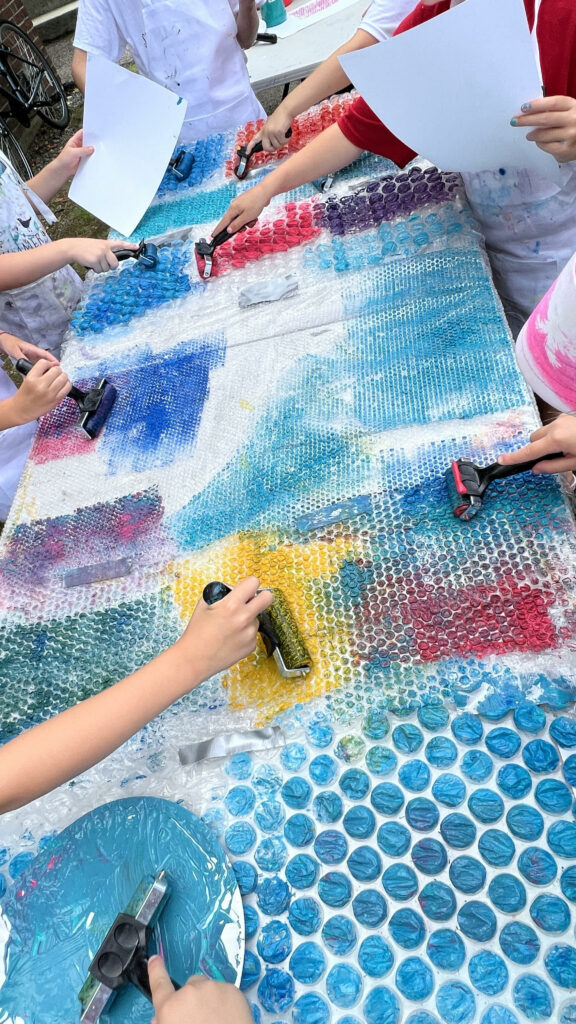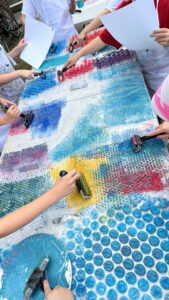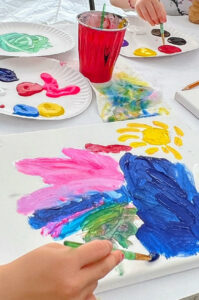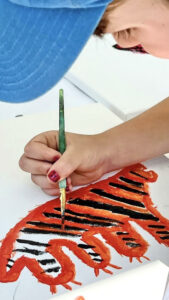Happy Accidents (when creating art)

Happy Accidents
Joan Clifford, Executive Director, Milton Art Center
At the Milton Art Center, occasionally I’ll overhear a teacher say, “That’s a happy accident!” The teacher is excitedly pointing out to the student creating art that the results, through unexpected, are aesthetically pleasing through either a unique color combination, an interesting texture, a new technique or an unexpected composition that enhances the artwork.
Happy accidents, a phrase that was popularized by TV artist Bob Ross, (on air 1983-1994), occur when artists are open to experimentation, playing, employing a mindset open to embracing the unexpected. They encourage artists to embrace mistakes and turn them into opportunities for growth and creativity.
Many famous artists throughout history have credited happy accidents with influencing their artistic style and pushing the boundaries of their work. Jackson Pollack, the abstract expressionist painter, often employed a “drip painting” technique. He famously discovered this unique style by accidentally dripping paint on a canvas on the floor of his studio.
A pioneer of abstract art, Wassily Kandinsky’s journey began when he viewed one of his paintings upside down and noticed the emotional impact of the abstract shapes and colors This happy accident led him to explore non-representational art.
Art education values the creative process as much as the final product.
A playful attitude towards creating art is a state of mind to be cultivated. Learning art is similar to learning a sport or a musical instrument, if you don’t allow yourself the grace to make mistakes, you don’t improve.
Art also teaches students to experiment, to take risks, to be open to new ideas and to find inspiration in everyday experiences. It’s practice, remembering each day to take expectations off yourself and to look and enjoy the sensory beauty of what’s in front and around you.
Part of our mission statement, “to educate, encourage and empower,” at the art center includes the word encouragement because that’s what I hear when teachers are speaking to students. They speak with reassurance, constructive feedback, praise, support; all aimed at bolstering the person’s confidence and motivation.
The word “encourage” is derived from the Old French word “encoragier,” which means to “make strong” or “to hearten.” At its core, encouraging someone is about empowering them emotionally and mentally, enabling them to take on challenges to achieve their goals with a more positive outlook.
You don’t have to be good at something for it to be good for you. Creating art or engaging in any creative activity can have therapeutic, emotional, and cognitive benefits. Joy, fulfillment, and creative growth go beyond external validation or achievement. It’s about embracing the journey, and discovering the intrinsic rewards that creativity offers, regardless of the outcome.
Much appreciation to our art teachers at the art center, Sue Hoy, Laurinda O’Connor, Mairead Dambruch, Camille DeMarco, Marjorie Belizaire, Kate Ollerhead Galvin, and Paula Stapleton for providing guidance and encouragement for students on their way to becoming artists.



